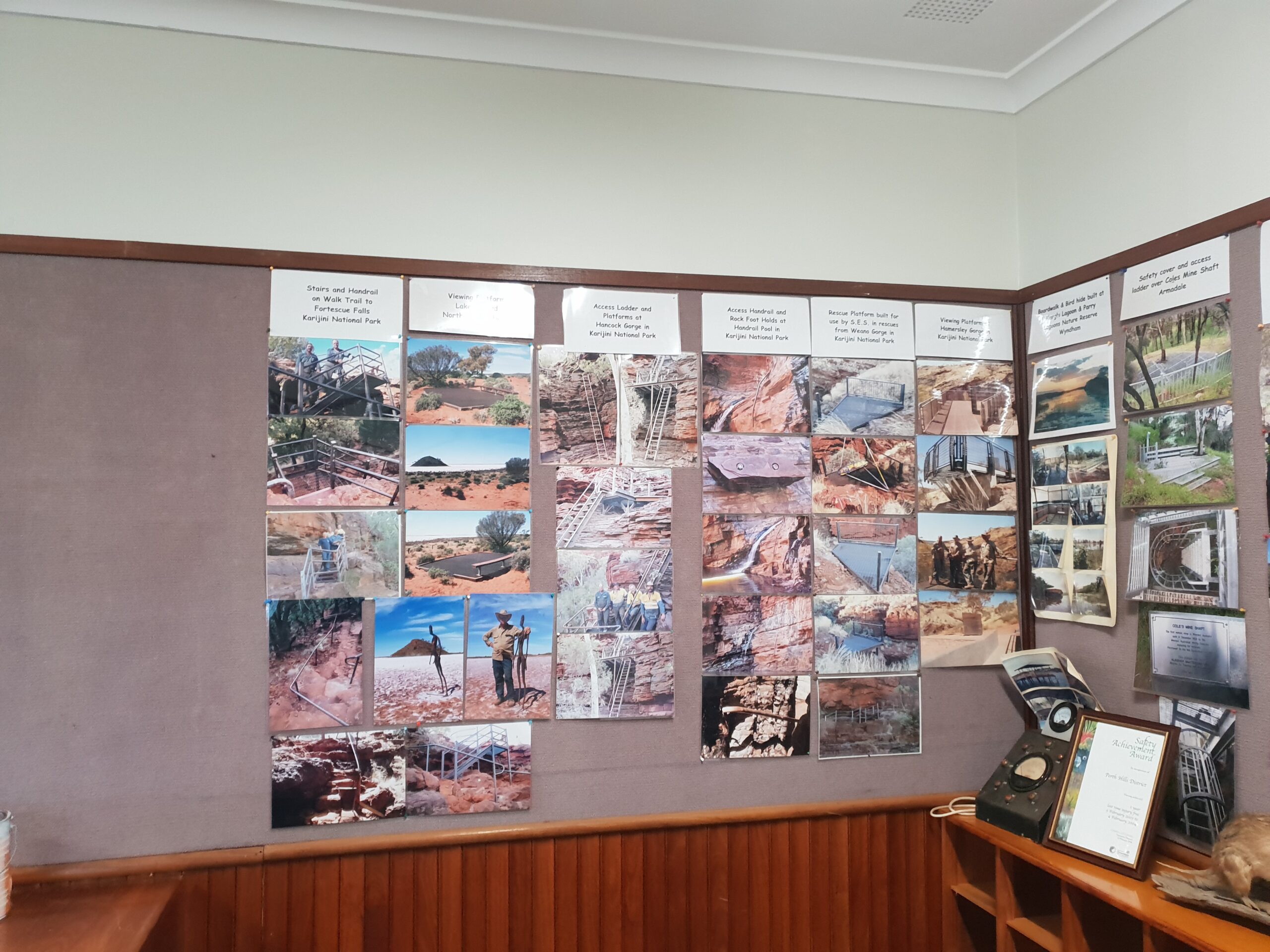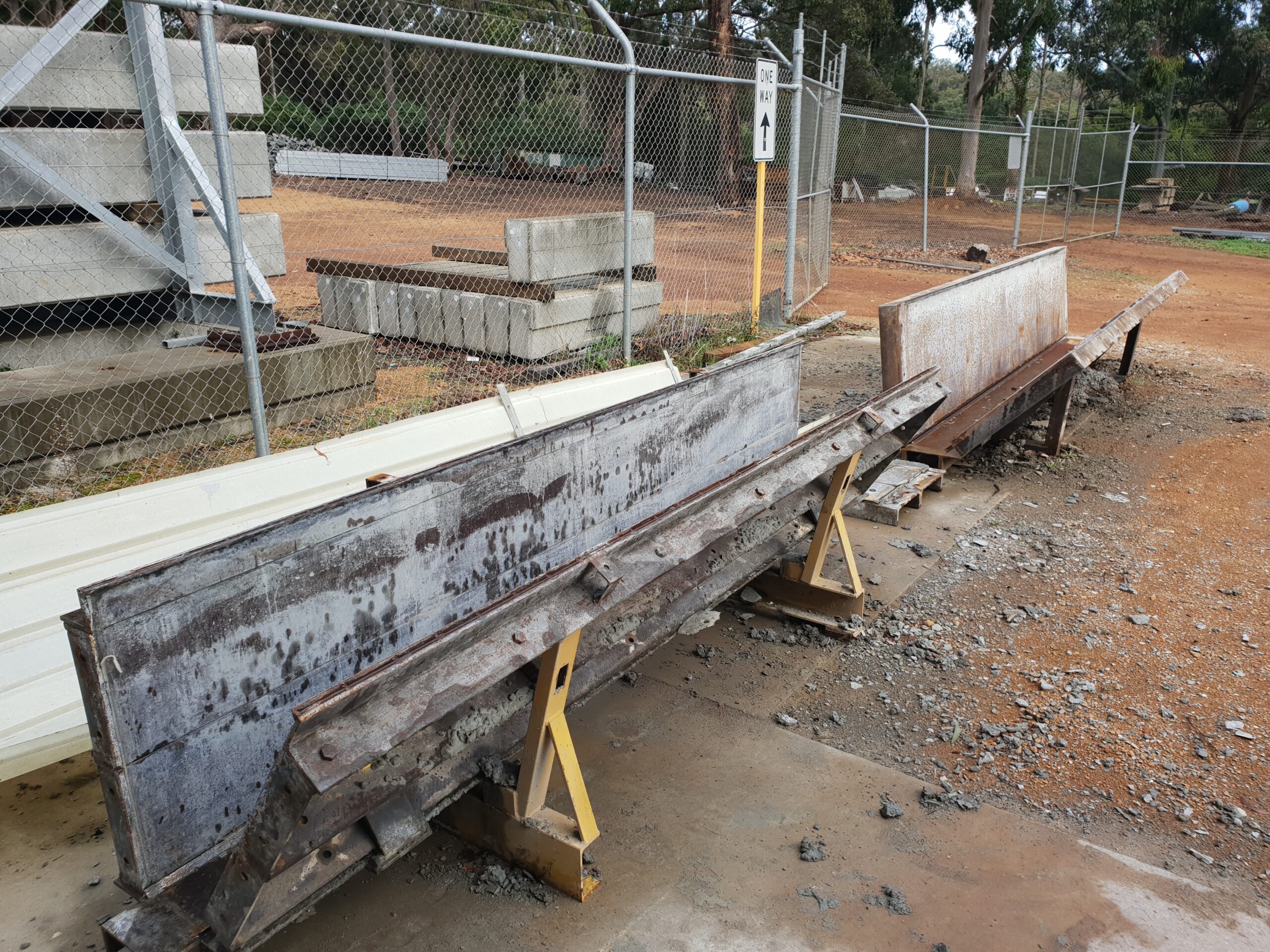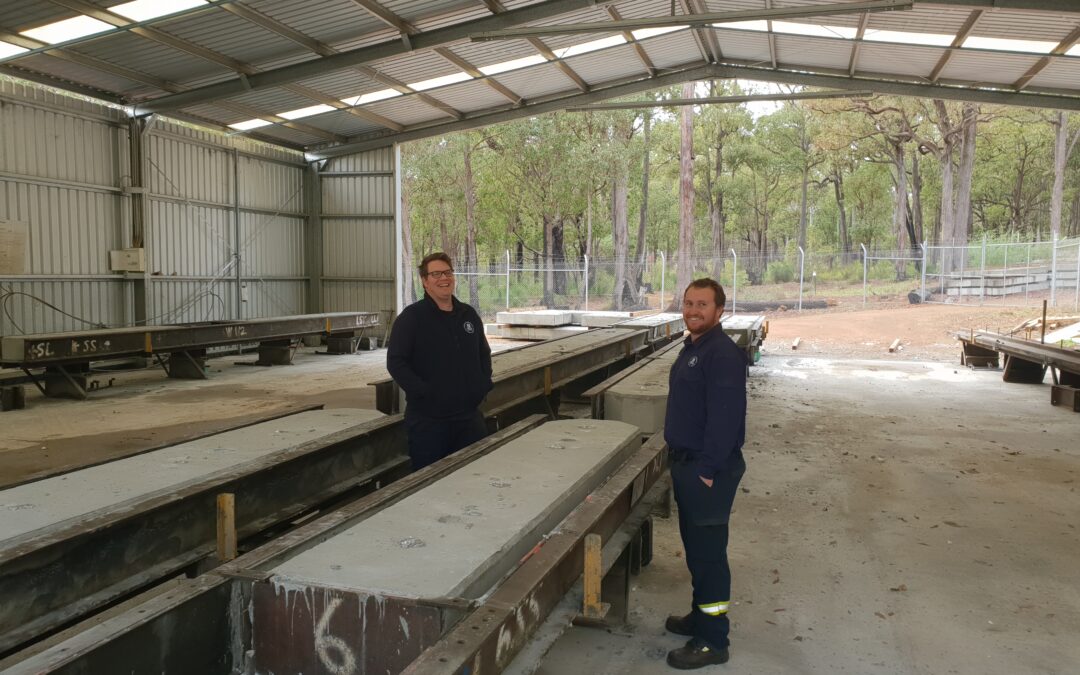Adrian Parker, Director at Peel Development Commission (PDC) and Therese Ejsak, Local Content Adviser for the Peel region recently ventured out to Jarrahdale to view the Department of Biodiversity, Conservation and Attractions (DBCA)’s Work Centre, located at 398 George Street. They were met by Frank Bailey, Sustainable Forest Management Operation Officer, and Trevor Jones, Acting Bridge and Road Specialist for Perth Hills District Parks and Wildlife Service. Frank and Trevor provided the team with an informative site tour and some background information about the Centre’s purpose and history.
Frank explained to the PDC that the Jarrahdale Work Centre has developed its steel fabrication workshop over the last two decades into the facility that it is now. The Centre provides equipment and facilities such as Heavy Vehicle Gates, Low Vehicle Gates, and Pedestrian Gates throughout Western Australia to aid in the conservation of the lands that the Department manages. This allows people to enjoy the National Parks, State Forests, and other reserves it manages for recreation. DBCA also fabricates picnic tables, BBQ fire rings, bollards and other made-to-order recreation products. These fabricated items can be seen across the Peel Region and throughout WA. The Jarrahdale Work Centre bridge fabrication facility supplies bridges predominantly throughout the forests in the South West but has also sent bridges as far away as Millstream Chichester National Park in the Pilbara. Permanent and seasonal conservation employees swap time between fighting fires, prescribed burning and other conservation work to fabricate, pour, and install steel and concrete bridges. This facility was developed to replace the ageing wooden bridge infrastructure throughout the forests with a modern and fireproof design.
The Work Centre encompasses approximately three hectares and is situated on State Forest land. The site also houses seasonal fire crew members who occupy historical renovated timber Forester’s quarters, as well as housing numerous fire trucks and firefighting equipment.
The main office building dates to the 1940s with more recent extensions added in the 1970s. There is extensive use of jarrah wood panelling, a testament to the surroundings and history.
As you enter the foyer, you are immediately struck by a range of photographs of Western Australia’s many iconic natural attractions such as Karajini, Murchison, Lake Ballard, and Lane Pool. The photos depict the diversity of projects undertaken by DBCA, all of which feature components manufactured in Jarrahdale. There is a sense of nostalgia and achievement in the images, and what is very evident is the relationship with Aboriginal communities and culture, and the importance of this work to ensure high quality and low impact tourist experiences across some of WA’s most amazing environments.
The site is tiered with the location of various large workshops, each serving a specific manufacturing purpose. The yards are strewn with completed concrete bridge beams, boardwalks, balustrades, and fencing components, each of which has been custom manufactured for projects all over the State.


The first stop on the tour was the metal fabrication shed where Adrian and Therese were shown machinery, welding equipment and various tools used in the production of bollards, balustrades, boardwalks, and fencing. Next, they visited a shed devoted to the manufacture of reinforcing steel made into mesh cages, to strengthen and reinforce the concrete bridge beams. A large woodworking workshop was next on the tour, where Western Australian hardwoods are placed through a thicknesser to produce tread boards, fencing panels, and the iconic routed DBCA destination and way-finding signs, found at all DBCA managed attractions.
The final shed is the drive-through concrete moulding shed, where concrete is poured into a series of parallel bridge beam moulds and left to cure before being broken out and laid-down in an adjoining storage yard awaiting dispatch to the length and breadth of the state.
The PDC team were told that the manufactured components at the DBCA Work Centre are more durable and fire-resistant, which is important given their function in national parks.
They also learned that the manufacturing of these products onsite provides a valuable opportunity for local jobs, skills and training, and that fire crew members can upskill and develop their technical skills during periods of low fire risk, to provide continuity of employment.
Having this regional DBCA Work Centre here in the Peel is fantastic, especially given the opportunities that are being afforded to our region that are of benefit to the whole state.
The Peel Development Commission is keen to work with DBCA to explore more opportunities to grow the capacity of this facility and to continue to provide valuable nature-based jobs and career pathways in the region. This positive view of the collaboration is echoed by Frank who says that the “DBCA looks forward to working in partnership with the Peel Development Commission to secure project supplies and contractors for its upcoming works within the Peel region.”



